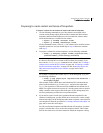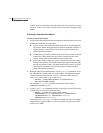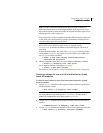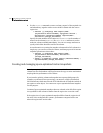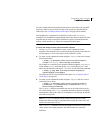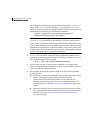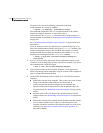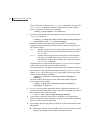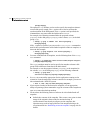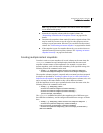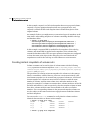
328 Administering volume snapshots
Creating instant snapshots
If required, you can use the following command to test if the
synchronization of a volume is complete:
# vxprint [-g diskgroup] -F%incomplete snapvol
This command returns the value off if synchronization of the volume,
snapvol, is complete; otherwise, it returns the value on.
You can also use the vxsnap print command to check on the progress of
synchronization as described in “Displaying instant snapshot information”
on page 342.
See “Controlling instant snapshot synchronization” on page 344 for more
information.
If you do not want to move the snapshot into a separate disk group, or to
turn it into an independent volume, specify the
syncing=off attribute. This
avoids creating unnecessary system overhead. For example, to turn off
synchronization when creating the snapshot of the volume, myvol, you
would use the following form of the
vxsnap make command:
# vxsnap -g mydg make source=myvol/snapvol=snap1myvol\
/syncing=off
2 Use fsck (or some utility appropriate for the application running on the
volume) to clean the temporary volume’s contents. For example, you can use
this command with a VxFS file system:
# fsck -F vxfs /dev/vx/rdsk/diskgroup/snapshot
3 If you require a backup of the data in the snapshot, use an appropriate
utility or operating system command to copy the contents of the snapshot to
tape, or to some other backup medium.
4 You now have the following choices of what to do with a full-sized instant
snapshot:
■ Refresh the contents of the snapshot. This creates a new point-in-time
image of the original volume ready for another backup. If
synchronization was already in progress on the snapshot, this
operation may result in large portions of the snapshot having to be
resynchronized. See “Refreshing an instant snapshot” on page 337 for
details.
■ Reattach some or all of the plexes of the snapshot volume with the
original volume. See “Reattaching an instant snapshot” on page 338 for
details.
■ Restore the contents of the original volume from the snapshot volume.
You can choose whether none, a subset, or all of the plexes of the
snapshot volume are returned to the original volume as a result of the
operation. See “Restoring a volume from an instant snapshot” on
page 340 for details.




